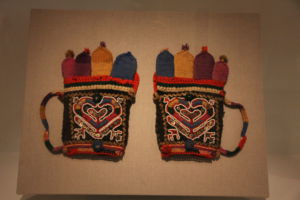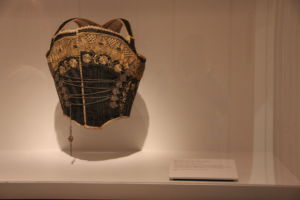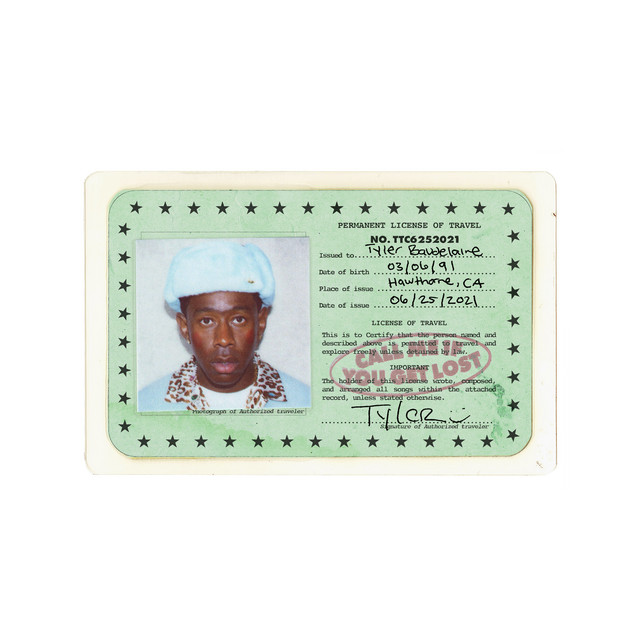“Embroidery is both old and new. It is found in most cultures, in all parts of the world, worked by men and women of all ages,” travelguru Mary Gostelow wrote in her novel, “A World of Embroidery.” This quote is prominently written on the walls of the de Young’s Beyond the Surface: Worldwide Embroidery Traditions exhibition. The display, which is running until March 25, elegantly showcases the technicalities and cultural significance of a range of embroidery from bags to tunics.

The exhibit provided free admission for students under 17 with valid ID, and only $6 for students above 18, making it easily affordable. However, the location of the exhibit within the de Young is unfortunately not ideal. Located on the second floor, I accidentally stumbled into it while I was waiting for an elevator. Unlike the vast majority of the de Young’s exhibits, Worldwide Embroidery Traditions does not seem to fit with the other dimly lit open rooms surrounded by beautiful scenery. Instead, the exhibit is a small glass room only about half the size of an average Redwood classroom. Adjacent to the exhibit are two large locked glass doors that appear to house an office or library. Though there is plenty of room to move about comfortably, the location was very haphazard and seemed like an office had been converted into a display last minute.

The exhibit itself has about 15 pieces framed in glass cases for viewing, with smaller projects laid out in drawers underneath. The artwork ranges from a Romanian dress to an Uzbekistanian tunic, there is a substantial amount of information and culture on display, despite the exhibit’s extremely underwhelming appearance. Each piece is accompanied by a concise description of its cultural significance and country of origin, for example a summary of a saddlebag from the Aymara people in Bolivia made of wool or camelid fiber. Many of the pieces in drawers below display varying embroidery techniques.
For example, one drawer displayed the three basic types of embroidery with a sampling of each one. A Turkish textile was accompanied with a vivid description of the technique known as Z-twisted threads used for many Turkish designs. I was pleasantly surprised to see such a variety of items and unexpectedly found myself very intrigued by the nuances of embroidery. While at first glance there isn’t much to know about stitching, every explanation on display is informative, well-written and interesting.

Perhaps the most breathtaking piece on display is a late 19th century women’s vest from Germany. The vest’s gold detailing and intricate stitching are in actuality the essence of the exhibit: a beautiful yet enlightening item of history. Adjacent to a matching pair of flats, for a moment I found myself back in 19th century Germany.
Moving through the whole exhibit at a reasonable pace took little time and lots of drawer opening. Though I enjoyed admiring the clothing on display and reading about the history relating to each piece, I do not think more than 15 minutes is necessary to fully experience the exhibit.
If you consider the intricacies of embroidery fascinating, this exhibit offers a great opportunity to easily expand your cultural knowledge. However, the lackluster location and general atmosphere did not make a lasting impression on me. The bottom line is if you are at the de Young and looking to explore an understated and generally overlooked art form, Worldwide Embroidery Traditions will perfectly fulfill your needs. With that being said, I would not recommend planning a trip just to see it.



















